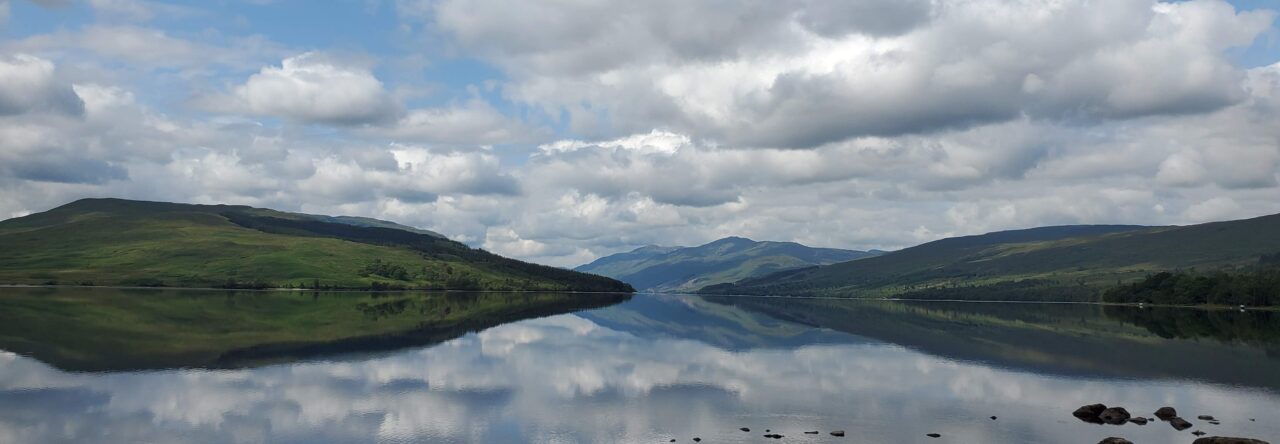My grandfather was a Ukrainian freedom fighter in the second World War sparring with the Nazis and communists to create a free Ukrainian state. He was on the losing side, and his country was consumed by Stalin’s Soviet Union. His hope for a free Ukraine lived on, along with those in the Ukrainian diaspora who recreated Ukrainian hamlets in the East Village in New York City, in the camps of the Catskills and all around the world from Canada to Argentina to Australia. These Ukrainians who lost their nation taught my generation how to be Ukrainian – by speaking the language and by continuing the refrain:
Слава Україні! – Slava Ukrainy! – Glory to Ukraine!
response: Героям слава! – Geroyam slava! – Glory to our Heros!
He did not live to see the Soviet Union’s fall and the blue and yellow flag of the nation he so loved flying high. I am glad he is not here today to see the Ukraine that he longed for coming apart at the seams. Today’s referendum in Crimea conducted under Soviet guns is history redux. The struggle is one for the very soul of Ukraine.
Ukraine has balanced its two faces throughout its history – the two faces in opposition today. The face of Janus turning to the East harkens back millenia. My first day in a graduate seminar on the History of Ukraine, I had to answer the question – did Ukraine as a country ever exist? Its origins in an early Slavic state called Kievan Rus are also considered the birth of Russia. Its borders have shifted as empires suppressed minority nationalities and traded territory like baseball card collectors. Stalin’s Russification and division of Ukraine was more of the same. The country’s split behooved Stalin so that he could maintain control of Ukraine’s natural assets – not just its breadbasket but also its coalmines in the East, which fed an enormous steel-making complex that propelled the Soviet Union’s industrialization. After starving millions of Ukrainians during the Great Famine, and purging millions more, Stalin filled Ukraine with those loyal to him and forced those who weren’t to conform.
Putin is pursuing the same tactics. Taking control of assets, moving in troops, suppressing the voices of those who disagree with him. He is using propaganda to play up divisions that exist but do not have to be divisive (many people, me included, speak both Ukrainian and Russia for example so it’s not a language division). And it looks like he’s playing to shift the borders once again.
The face of Janus to the West are all who see the potential of Ukraine in Europe. Ukraine has been looking to Europe for centuries. Today, Ukrainian citizens see opportunities for Ukraine to reshape its political landscape to be more democratic and less despotic, the chance to restart the economy with a version of shock therapy like Poland did back in 1989, the ability to build social, cultural, and literary links that have already bloomed. Take for example my cousin from the south of Ukraine (near Odessa, i.e. near the Crimea flashpoint) who is now studying in Poland where hundreds of Ukrainians like her are learning how to create a new future for their Ukraine. These ties cannot be severed.
Millions of Ukrainians like me in the Diaspora (14 million or so according to recent figures I have read) are tied to the idea of Ukraine as part of the West, not East. We have come together via social media rallying around “Euromaidan” – Ukraine’s Western Janus that toppled Putin’s lackey, Yanukovich, as well as Ukraine’s new leadership. Protests and letter writing campaigns have united young and old – one pre-form letter stating it the most succinctly, “The soviet ways are not ways that these people ever want to see again in their country.”
We cannot go backwards. In our church coffee hour today, we shared news of loved ones in Ukraine and checked our phones every few minutes for news on the referendum. The consensus rising is that Putin will fail in the long-term, even if he gets his Crimean vote. He has opened a Pandora’s box, said many, who believe the protests erupting across Russia will continue to grow. The hope is that sanctions from Europe and the US will further alienate Putin from his people.
There is also the very real sense that Ukrainians at home and abroad will fight – in actions and words – like my grandfather fought during WWII. The Ukrainian spirit is something Putin can never suppress.
Слава Україні! – Slava Ukrainy! – Glory to Ukraine!






